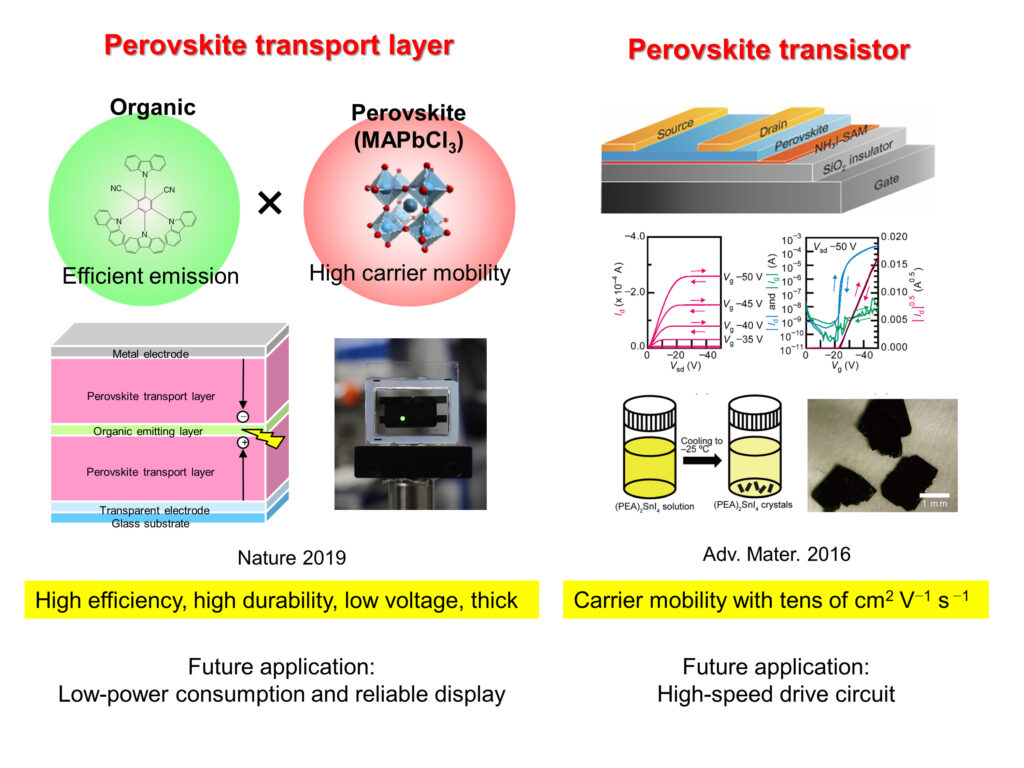Halide perovskite photoelectric conversion
Development of hybrid materials and devices based on new structures and principles
Halide perovskite photoelectric conversion
Various efforts are underway around the world to achieve a carbon neutral society. Solar energy is an inexhaustible and clean energy source. Various photovoltaic materials have been developed to convert solar energy into electrical energy. Among them, halide perovskites have attracted significant attention due to their potential for fabricating lightweight, flexible, and low-cost solar cells. In perovskite solar cells, high photoelectric conversion efficiency comparable to silicon-based solar cells and compound semiconductor-based solar cells has already been achieved. Our laboratory is promoting basic and applied research on perovskite solar cells with the aim of contributing to the widespread use of photovoltaics. Perovskite solar cells can be made to emit light when driven in reverse; LEDs and lasers are also important research topics.
- Elucidation of the operating mechanism of perovskite solar cells
- Development of basic technologies such as defect passivation and optimization of device structure for higher efficiency
- Elucidation of degradation mechanisms and development of high durability technologies
- Design and synthesis of electrochemically and photochemically stable organic hole transport materials
- Green hydrogen production using solar cells
- Development of photodetectors with excellent photosensitivity and response speed
- Expansion of research into LEDs and lasers

Development of hybrid materials and devices based on new structures and principles
Organic materials can be designed and synthesized at will, and they can have a wide variety of functions such as light absorption, luminescence, energy transfer, charge transport, charge separation, and molecular recognition. However, compared to inorganic devices such as silicon, organic devices still have issues in terms of operating speed and reliability. In our laboratory, we aim to create hybrid materials that integrate organic and inorganic materials. Hybrid materials are expected to realize various new-principle devices. We aim to present a paradigm shift to ultimate hybrid materials and devices that combine the versatile functions derived from organic materials created from infinite molecular design with the features derived from inorganic materials such as high-speed operation.
- Synthesis of hybrid materials and elucidation of fundamental properties
- Field-effect transistors with high-speed operation
- Light-emitting devices based on energy transfer
- Photovoltaic devices using organic-inorganic charge transfer
- Development of carrier doping technology
- Various sensing devices

